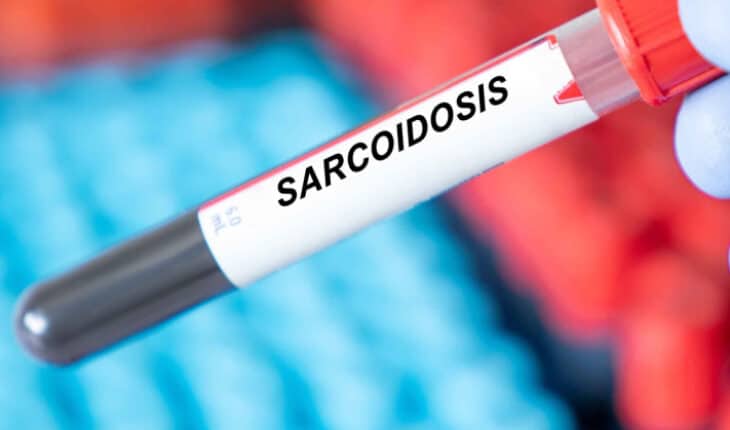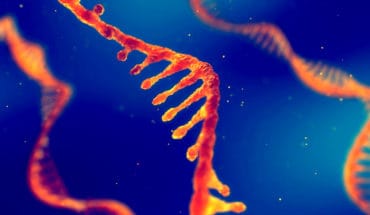Sarcoidosis is an inflammatory disease in which immune cells form tissue nodules in various organs, which can drastically impair organ function. Now a MedUni Vienna research team led by Thomas Weichhart from the Center for Pathobiochemistry and Genetics has developed an animal model that replicates the development of the disease in the heart and can contribute to research into sarcoidosis.
Initial results suggest significant roles for certain proteins and immune cells in the development of sarcoidosis. The findings of these studies have been published in Science Translational Medicine and the Journal of the American Heart Association.
In sarcoidosis, granulomas, nodular immune cell collections, form and can occur in almost any organ. The disease probably starts with a pathological spread of macrophages (scavenger cells) and then other immune cells infiltrate the nodules, which contribute to the complete clinical picture. The lungs are most commonly affected, but the heart is often also affected by the granulomatous leasions, and this sometimes drastically limits heart function. The disease is not causally curable because there has been a lack of in vivo models that reliably replicate the disease and in which new therapeutic options can be tried.
The research group led by Thomas Weichhart at MedUni Vienna’s Center for Pathobiochemistry and Genetics was able to develop a model for pulmonary sarcoidosis several years ago. However, until now there has been no animal model that replicates sarcoidosis in the heart. Cardiac sarcoidosis in particular is often very difficult to diagnose and treat, which is why a model was urgently needed.
Animal model depicts cardiac sarcoidosis in all its details
“We have now discovered that the permanent activation of the protein mTORC1 directly in macrophages is sufficient for granulomas to develop spontaneously in the heart,” explains Clarice Lim, postdoctoral researcher at MedUni Vienna and lead author of one of the studies. mTORC1 is a central cell sensor that measures food and energy availability and thus regulates cell metabolism, which in turn strongly influences the immune response. Activation of mTORC1 leads to uncontrolled cell proliferation of macrophages and recruitment of other immune cells, including fibroblasts, which eventually lead to fibrosis in the heart.
Together with colleagues from St George’s University of London and MedUni Vienna’s Centre for Biomedical Research, it was shown that the model reproduces the human disease in all its details. This means that, for the first time, the development of the disease can be researched in greater detail. Above all, however, existing drugs can be tested immediately to see whether they have a therapeutic benefit, which could then be transferred to the clinic very quickly. In this respect, the researchers were already able to show in the study that everolimus, an already clinically approved drug, could have a therapeutic benefit in cardiac sarcoidosis.
However, this model also shows promising results when other immune cells are blocked therapeutically. Together with colleagues from Vanderbilt University School of Medicine in Texas, Thomas Weichhart’s group was able to show that CD8+ T cells contribute to a particularly pronounced chronic sarcoidosis. Clarice Lim, who was also a lead investigator in this study, says: “We found that blocking the Src homolog-2 domain-containing phosphatase 2 (SHP2) protein only had a therapeutic benefit in about 50% of the animals in our model, but interestingly not in the others.” Further analysis then showed that the protective effect only occurred when active SHP2 was found in CD8+ T cells in the lung nodules of the responders. These T cells released the cytokine interferon-gamma, which caused more macrophages and fibroblasts to be attracted, leading to disease progression.
These results were subsequently also demonstrated in patients with pulmonary sarcoidosis. Especially chronic patients with progressive end-stage sarcoidosis also showed these SHP2-positive CD8+ T cells, which produced a lot of interferon-gamma. Ex-vivo blockade of SHP2 in these CD8 cells was able to block the production of interferon-gamma. Therefore, this study suggests that blocking SHP2 could be used as a therapeutic measure especially in severe chronic cases against human diseases.
Publications:
Science Translational Medicine
SHP2 promotes sarcoidosis severity by inhibiting SKP2-targeted ubiquitination of TBET in CD8+ T cells
Sherly Celada, Clarice X Lim, Alexandre F Carisey, Scott A Ochsner, Carlos F Arce Deza, Praveen Rexie, Fernando Poli De Frias, Rafael Cardenas-Castillo, Francesca Polverino, Markus Hengstschläger, Konstantin Tsoyi, Neil J McKenna, Farrah Kheradmand, Thomas Weichhart, Ivan O Rosas, Luc Van Kaer, Lindsay J Celada
Science Translational Medicine, 2023 Sep 13;15(713):eade2581
https://doi.org/10.1126/scitranslmed.ade2581
Journal of the American Heart Association
A mTORC1-dependent mouse model for cardiac sarcoidosis
Carlos Bueno-Beti, Clarice X Lim, Alexandros Protonotarios, Petra Lujza Szabo, Joseph Westaby, Mario Mazic, Mary N. Sheppard, Elijah Behr, Ouafa Hamza, Attila Kiss, Bruno K Podesser, Markus Hengstschläger, Thomas Weichhart#, Angeliki Asimaki#
Journal of the American Heart Association, 2023 Sep 26:e030478.
https://doi.org/10.1161/JAHA.123.030478
- New lipid-based pathway discovered as key to memory formation - 25th June 2025
- Crucial link could explain how Alzheimer’s takes hold - 25th June 2025
- Understanding Your Mind Can Improve Daily Life - 25th June 2025







